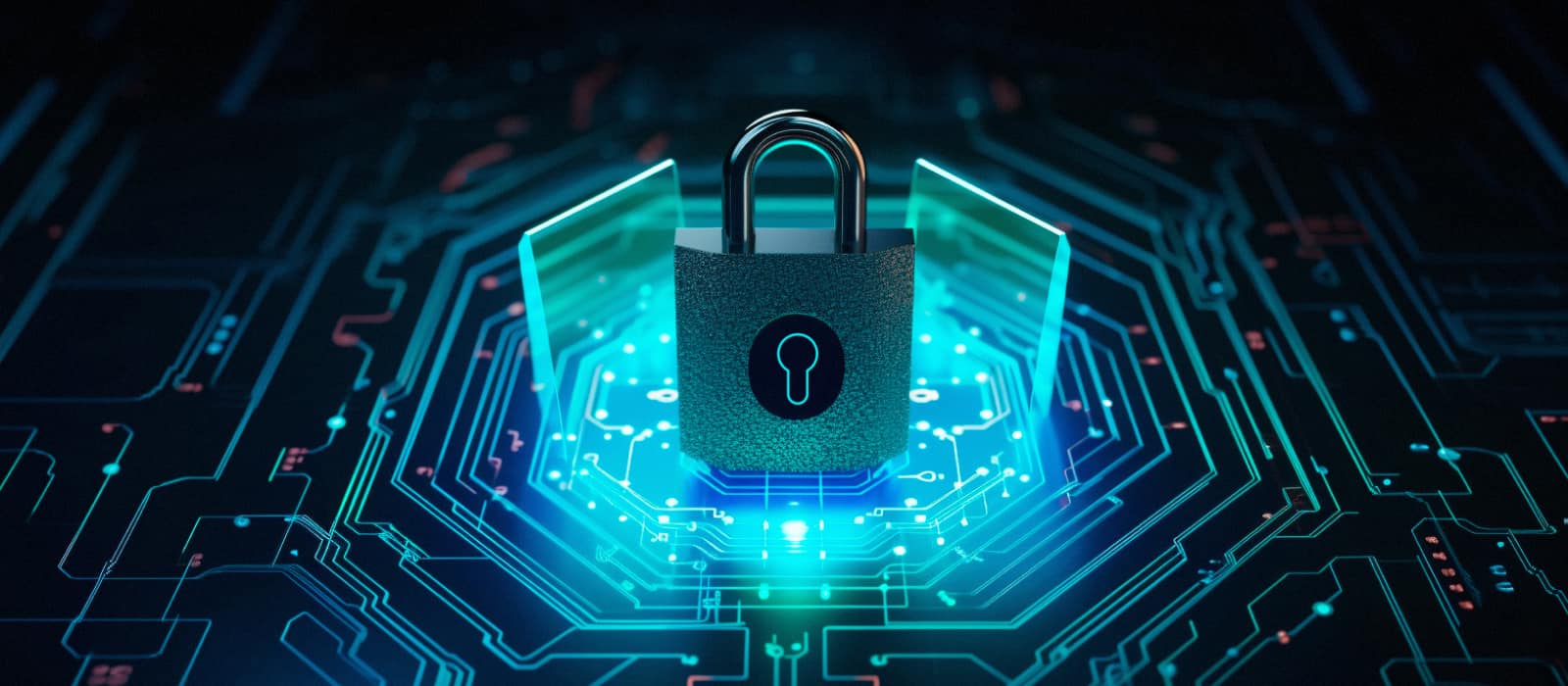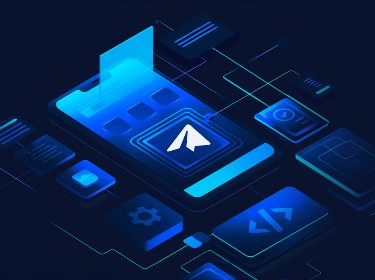Cybersecurity risk management frameworks are vital for protecting your organization's data assets. Lacking these, you risk heightened exposure to cyberattacks, which can lead to financial loss, reputational harm, and legal issues.
Implementing a cybersecurity risk management framework enables your organization to address critical threats and issues swiftly. Currently, various risk management frameworks exist, each with its own standards for handling cybersecurity issues.
In this article, we’ll explore the most common cybersecurity risk management frameworks and discuss best practices to enhance your business’s cybersecurity measures.
What is the risk management framework in cybersecurity?
A cybersecurity risk management framework is a structured set of guidelines and best practices designed to help organizations identify, assess, and respond to cybersecurity threats and vulnerabilities. It provides a systematic approach to managing and mitigating cyber risks to protect data, systems, and networks from cyberattacks.
The cybersecurity risk management process typically includes four key stages:
Stage 1. Risk identification: Defining current or potential risks that could affect business workflows.
Stage 2. Risk evaluation: Assessing identified risks to understand their potential impact on your business.
Stage 3. Risk control: Establishing methods, tools, and frameworks to mitigate risks and potential threats.
Stage 4. Controls assessment: Evaluating the effectiveness of controls in risk mitigation and making necessary adjustments if needed.
Our DevSecOps consultants will integrate security practices into your development lifecycle, enhancing your software's resilience while accelerating deployment timelines
A list of 8 cybersecurity risk management frameworks and standards
![]()
Below is a list of eight essential cybersecurity risk management frameworks and standards that your business should be aware of.
1. NIST cybersecurity framework
The NIST cybersecurity framework is the golden standard for evaluating cybersecurity maturity, identifying security gaps, and managing risks.
Developed by the National Institute of Standards and Technology (NIST), the cybersecurity framework (CSF) focuses on improving an organization’s ability to prevent, detect, and respond to cyber incidents. It emphasizes the importance of understanding cybersecurity risks as part of the organization’s risk management processes.
NIST CSF is organized into five core processes:
- Identify. Develops an understanding of the organization’s risk environment to prioritize cybersecurity efforts.
- Protect. Designed to outline safeguards to limit or contain the impact of a potential cybersecurity event.
- Detect. Implements appropriate measures to identify cybersecurity incidents quickly and effectively.
- Respond. Focuses on taking immediate action to contain and mitigate the effects of cybersecurity incidents.
- Recover. Encompasses recovery planning and improvements aimed at minimizing impact and downtime.
In February 2022, NIST released a call for public input through a Request for Information (RFI), inviting comments and recommendations on enhancing their current framework to better address current and future cybersecurity challenges.
In 2023, NIST published an early draft of CSF 2.0. It introduces a new core function, Govern, to the existing framework with the goal of setting up and monitoring an organization’s risk management strategy, expectations, and policy. The document aims to enhance the framework transparency and create discussion for improvement.
The entire journey to the NIST CSF 2.0 can be found here.
2. ISO 27001 & 27002
Designed by the International Organization for Standardization (ISO), ISO 27001 is a standard for information security management systems (ISMS), specifying requirements for establishing, implementing, maintaining, and continually improving an ISMS.
ISO 27001 centers on three key principles for information security:
- Confidentiality, ensuring that information is accessible only to those authorized to have access.
- Integrity, safeguarding the accuracy and completeness of information and processing methods.
- Availability, guaranteeing that authorized users have access to information and associated assets when required.
Achieving ISO certification allows companies to prove to stakeholders, including the board, customers, partners, and shareholders, their commitment and proper management of cyber risk.
ISO 27002 cybersecurity risk management framework provides guidelines and best practices for information security management, offering recommendations for information security controls supporting the requirements of ISO 27001.
ISO 27002 comprises four main controls: organizational, people, physical, and technological. Other specific controls include but are not limited to:
- Threat intelligence
- Information security for cloud services
- Configuration management
- Information deletion
- Data masking and data leakage prevention
- Secure coding
Organizations can use ISO 27002 guidelines as a foundation for developing their ISMSs.
3. SOC2
A Service Organization Control (SOC) Type 2 framework is an auditing standard used to assess the effectiveness of an organization’s controls, focusing on five key areas:
- Security
- Availability
- Confidentiality
- Processing integrity
- Privacy
SOC2 sets forth over 60 compliance criteria and detailed auditing processes for evaluating third-party systems and controls, often requiring up to a year for audit completion and report issuance on a vendor’s cybersecurity measures.
Given its comprehensiveness, SOC2 presents significant implementation challenges, particularly for entities in the finance and banking sectors, which have higher compliance standards compared to other industries.
Moreover, it’s not just a one-time certification but requires regular audits to maintain compliance, making it an ongoing effort for continuous improvement in data security services and management.
4. CIS Controls
The Center for Internet Security (CIS) Control Framework is a set of best practices and guidelines designed to help organizations improve their cybersecurity by prioritizing and implementing proven security controls.
The CIS controls are divided into three key categories:
- Basic. Encompass critical cybersecurity practices every organization must adopt, like antivirus use and patching.
- Foundational. Comprise advanced security measures, such as two-factor authentication.
- Organizational. Focus on user awareness and training.
Overall, the framework comprises 20 controls covering multiple aspects, including:
- Inventory and control of hardware and software assets
- Configuration of hardware and software
- Incident response
- Secure configuration for network devices
- Analysis of audit logs
- Data recovery
5. FAIR framework
The Factor Analysis of Information Risk (FAIR) is a quantitative risk analysis methodology designed to help organizations assess information risks.
This risk management framework offers a quantitative model for both operational risk and information security by assigning monetary values to different types of risk. This enables businesses to make actionable, financially sound decisions regarding cybersecurity.
The FAIR framework is based on four key components:
- Threats. They can represent any item, activity, individual, or component that has the potential to damage a resource or asset.
- Assets. Can be tangible or intangible. Tangible assets include data-processing devices like computers, laptops, and servers. An example of an intangible asset is a data file.
- Organization. The subject of interest. The FAIR risk methodology is crucial for safeguarding organizational information, which is perpetually vulnerable.
- The external environment. External factors refer to elements outside an organization’s control, primarily encompassing regulatory frameworks, legislative challenges, and competition within the industry.
FAIR is particularly advantageous for mature organizations employing integrated risk management (IRM) strategies, aiming to support them in making informed cybersecurity decisions. It enables the identification of risks, optimizes resource allocation for addressing these risks, and quantifies threat levels.
Check out the latest trends that are shaping the cybersecurity landscape
6. PCI-DSS
The Payment Card Industry Data Security Standard (PCI-DSS) is a global framework established to protect cardholder data and secure card transactions.
This cybersecurity risk management standard outlines a set of technical and operational requirements for organizations that store, process, or transmit credit card information, aiming to reduce credit card fraud through enhanced security measures.
PCI-DSS is focused on six key principles:
- Build a secure network and systems
- Protect cardholder data
- Maintain a vulnerability management framework
- Implement efficient access control measures
- Maintain an information security policy
- Regularly monitor and test networks
PCI-DSS is mandatory for all organizations involved in the payment card processing chain.
7. HIPAA
The Health Insurance Portability and Accountability Act (HIPAA) is a set of regulations established to safeguard protected health information (PHI) and ensure its confidentiality, integrity, and availability.
The standard includes rules for healthcare providers and their business associates to protect patient privacy and regulate the electronic exchange of healthcare data. Specifically, organizations must:
- Guarantee the confidentiality, integrity, and accessibility of any e-PHI they generate, receive store, or transmit
- Recognize and defend against foreseeable security or integrity threats to the data
- Safeguard against expected unauthorized uses or disclosures
- Ensure adherence to these standards by their employees
HIPAA safeguards can be broadly categorized into three large categories:
- Administrative. These involve the security management process, designation of security personnel, information access management, workforce training and management, and periodic assessment of security policies.
- Physical. These pertain to the physical security measures that protect the physical access to PHI and electronic systems containing PHI. Examples include controlling access to facilities and workstations, incorporating secure storage of hardware containing PHI, and securing facilities against unauthorized access.
- Technical. These involve the technological measures implemented to protect electronic PHI, including the use of access controls such as user authentication and encryption, audit controls for monitoring access to electronic PHI, and integrity controls to ensure PHI hasn’t been improperly altered or destroyed.
Compliance with HIPAA standards is essential for healthcare software development services providers and entities within the healthcare industry to maintain patient trust and avoid legal penalties.
8. GDPR
The General Data Protection Regulation (GDPR) is a comprehensive data protection and privacy regulation enacted by the European Union (EU) to strengthen and harmonize data protection laws across EU member states.
The GDPR standard aims to safeguard the privacy and personal data of individuals within the EU by imposing obligations on organizations that process personal data to get consent, be transparent about how they use it, secure it, and report any breaches to authorities.
The seven core principles of GDPR are:
- Lawfulness, fairness, and transparency. Personal data must be processed lawfully, fairly, and transparently.
- Purpose limitation. Data should be collected for specified, explicit, and legitimate purposes and not further processed in a manner incompatible with those purposes.
- Data minimization. Only necessary personal data should be collected for the intended purpose.
- Accuracy. Personal data must be kept up to date.
- Storage limitation. Data should be kept in a form that permits the identification of data subjects for no longer than necessary.
- Confidentiality and integrity. Personal data must be processed in a manner that ensures appropriate security, including protection against unauthorized or unlawful processing, and against accidental loss, destruction, or damage.
- Accountability. Data controllers are responsible for demonstrating compliance with GDPR principles and must be able to show how they comply with the regulations.
Compliance with GDPR is mandatory for organizations that handle EU residents’ personal data, regardless of where the organization is located.
Why do you need a cybersecurity risk management framework?
The number of cybersecurity attacks such as misuse of information, unauthorized access, and data leaks increases exponentially each year.
According to Cybersecurity Ventures, it is projected that the global annual cost of cybercrime will hit $9.5 trillion in 2024 and escalate to $10.5 trillion by 2025.
Furthermore, an Accenture report highlights that small and medium-sized businesses are increasingly becoming targets of cyber attacks. It points out that while small businesses are the focus of 43% of cyber attacks, only 14% have the necessary preparedness, awareness, and capability to protect their networks and data effectively.
Explore key cybersecurity threats and challenges to be aware of in 2024
Cybersecurity risk management frameworks offer businesses a carefully devised plan to safeguard their data, infrastructure, and information systems. These frameworks provide direction, enabling IT security leaders to effectively manage their organization’s cyber risks.
An incorporated risk management framework also ensures the organization meets legal, regulatory, and industry compliance standards, minimizing legal risks and penalties.
On top of that, a cybersecurity risk management framework helps build trust among customers, partners, and stakeholders by demonstrating a commitment to protecting sensitive information and systems.
Cybersecurity risk management best practices
![]()
While every cybersecurity risk management framework has its unique features, there are best practices applicable across all frameworks.
Let’s take a closer look at each.
Implement regular risk assessments
Conduct regular and comprehensive risk assessments to systematically identify vulnerabilities and threats, and evaluate the potential impact of cyber attacks on the organization’s assets.
By gaining insights into where the greatest risks lie, you can tailor your cybersecurity strategy to protect critical assets, reduce the likelihood of breaches, and minimize the financial and reputational damages resulting from cyber incidents.
Conduct employee training
Educate your employees about cybersecurity risks and best practices. Regular training sessions not only increase awareness about cybersecurity threats but also help prevent phishing attacks and other forms of social engineering. This includes recognizing and reporting phishing attempts, using strong passwords, and following the company’s cybersecurity policies.
Keep all systems up to date
Keep all systems, software, and applications up to date with the latest security patches to protect against vulnerabilities. This includes not just the periodic application of updates but also maintaining an inventory of all digital assets to ensure nothing is overlooked.
Create an incident response plan
Develop and maintain an incident response plan to guarantee your organization can quickly respond to and recover from a cyber incident. This plan should clearly outline procedures on how to respond to a cyber incident, ensuring that all employees know exactly what actions they should take in the event of a breach.
The document should also include communication strategies for internal and external stakeholders, as well as procedures for documenting and analyzing the incident to prevent future occurrences.
Prioritize cyber risks
Prioritize addressing high-level risks immediately to safeguard critical assets, while low-level risks can be managed later or accepted as tolerable risks. You should also perform the cost-benefit analysis of protecting an asset. For example, if the cost exceeds the asset’s value, it may not be justifiable to invest in protection, except when potential damage to your reputation is at stake.
This approach helps efficiently allocate resources, focusing on the most significant threats first and making informed decisions about which risks to mitigate, accept, or monitor over time.
Cybersecurity risk management with PixelPlex
Implementing robust cybersecurity standards and frameworks is crucial for protecting against cyber threats, ensuring data protection, and maintaining trust.
Choosing the right framework involves assessing your organization’s specific needs, regulatory requirements, and the nature of the data it handles to align with the most relevant standards for comprehensive risk management.
If you need assistance with assessing your organization’s cybersecurity posture or implementing best security practices, consult our PixelPlex technology consultants. From risk assessment and security policy implementation to live monitoring and compliance assurance, our team can handle any cybersecurity challenge.




